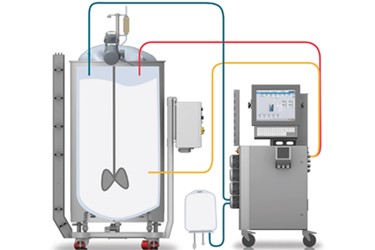A Comprehensive Guide to Implementing Foam Control Solutions in Your Procedures
Reliable foam control is a crucial aspect of operational performance that frequently goes ignored. Comprehending the ins and outs of foam generation can significantly affect both performance and product high quality. By checking out essential factors such as application compatibility and workers training, companies can optimize their foam monitoring efforts.
Understanding Foam Obstacles
Foam difficulties are a considerable worry across various sectors, affecting functional effectiveness and product top quality. The formation of excessive foam can impede processes such as blending, transportation, and storage space, bring about raised downtime and waste. In markets like food and beverage, drugs, and petrochemicals, foam can disrupt assembly line, causing product inconsistencies and contamination dangers.
Additionally, foam can block equipment performance, causing expensive repairs and maintenance. In wastewater treatment, foam can disrupt clarifier procedures, resulting in lower treatment efficiency and regulative conformity problems.
Understanding the underlying reasons of foam generation is vital for efficient monitoring. Elements such as surfactants, temperature fluctuations, and agitation levels can all add to foam production. Recognizing these elements enables industries to carry out targeted techniques that decrease foam formation while keeping product honesty.
Sorts Of Foam Control Solutions

Mechanical services entail using devices such as foam skimmers or defoamers. These tools physically get rid of foam from the surface of fluids, thus protecting against overflow and maintaining ideal degrees in containers and reactors. Chemical options, on the various other hand, include the application of defoaming agents-- compounds that interfere with the foam structure, resulting in its collapse. These representatives can be silicone-based, organic, or aqueous, each offering distinctive advantages relying on the application environment.
Finally, functional methods focus on process modifications. This might entail customizing devices criteria, such as temperature level and pressure, or changing the circulation rates of fluids to minimize foam generation. Implementing good housekeeping practices can also minimize foam development by lowering impurities that contribute to foam security.
Choosing the suitable foam control service involves evaluating the specific needs of the operation, including the kind of process, the qualities of the materials included, and security factors to consider.
Selecting the Right Products
Choosing the right foam control items needs a detailed understanding of the details application and its special challenges. Elements such as the sort of foam, the environment in which it occurs, and the wanted outcome all play crucial functions in product choice. Foam Control. For instance, in sectors like food handling, it is important to select food-grade defoamers that adhere to security policies while effectively taking care of foam.
Additionally, think about the thickness of the liquid where the foam trouble exists. Some try this products are created for low-viscosity applications, while others are tailored for thicker liquids. Compatibility with existing processes is an additional essential facet; the selected foam control representatives ought to incorporate effortlessly without interrupting overall procedures.
An additional vital factor is the approach of application. Some products may require dilution, while others can be used straight. Examining the simplicity of use and the called for dose can offer understandings into the product's performance and cost-effectiveness.
Implementation Approaches
Effective implementation approaches for foam control services need a systematic strategy that lines up product choice with functional needs. The very first step includes a complete analysis of the processes where foam takes place, identifying details locations that necessitate intervention. By involving cross-functional groups, including go to this web-site high quality, engineering, and production guarantee, companies can collect insights that inform the option of one of the most reliable foam control items.
Following, it is critical to develop clear purposes for foam decrease, making certain that these goals are quantifiable and possible. This might involve defining appropriate foam levels and the timelines for execution. Educating personnel on the buildings and application techniques of selected foam control representatives is similarly essential, as correct use is important for optimal outcomes.
Furthermore, incorporating foam control services right into existing process needs careful preparation. Ultimately, a well-structured approach will enhance functional performance while successfully handling foam-related difficulties.
Tracking and Reviewing Effectiveness
Monitoring and examining the effectiveness of foam control services is necessary for guaranteeing that carried out approaches generate the wanted results. This process involves methodical information collection and analysis to evaluate the efficiency of foam control agents and methods. Trick efficiency indicators (KPIs) need to be established before implementation, permitting a clear standard versus which to determine progression.

Assessing performance likewise requires regular testimonials of foam control treatments and agent effectiveness. This can be completed through sampling and screening, allowing drivers to identify if current solutions are meeting functional demands. It is important to obtain comments from group participants who engage with these systems daily, as their understandings can expose operational nuances that measurable information might overlook.

Eventually, a structured tracking and link assessment framework helps identify needed modifications, ensuring that foam control services stay effective, affordable, and aligned with organizational objectives.
Verdict
In verdict, reliable foam control options are crucial for maximizing functional performance and maintaining product quality. A thorough understanding of foam obstacles, integrated with the selection of suitable items and execution strategies, assists in the effective administration of foam generation. Establishing quantifiable KPIs and spending in personnel educating further enhance the efficiency of foam control steps. Regular tracking and assessment ensure continual enhancement, ultimately bring about an extra effective and structured functional setting.
Applying excellent housekeeping practices can also alleviate foam development by lowering impurities that contribute to foam stability.
Picking the best foam control items requires a comprehensive understanding of the specific application and its distinct challenges (Foam Control).Successful implementation techniques for foam control services require a systematic strategy that straightens product choice with operational demands.In final thought, reliable foam control services are essential for maximizing functional performance and maintaining product quality. A comprehensive understanding of foam obstacles, combined with the option of appropriate items and application approaches, facilitates the successful management of foam generation
Comments on “Usual Difficulties in Foam Control and Exactly How to Get rid of Them Effectively”